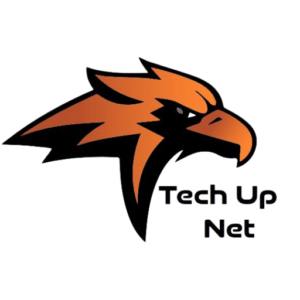Introduction
The tech industry has always been a hub for innovation, growth, and opportunity, drawing in thousands of new talents each year. In this fast-evolving sector, talent development companies play a significant role by offering specialized training to help bridge the gap between job seekers and employment opportunities. Smoothstack, a notable player in this space, has been involved in recent legal disputes, sparking interest and debate within the industry. The “Smoothstack lawsuit” has raised questions about employment contracts, trainee treatment, and fair hiring practices. This article will delve into the controversy, explore the implications, and examine how it could reshape practices in the tech industry.
What is Smoothstack?
Smoothstack is a talent development and training company focused on the tech sector. Based in the United States, Smoothstack Lawsuit provides an apprenticeship model where individuals, particularly recent graduates, are recruited and trained in various IT roles before being placed with partnering employers. This model allows companies to access a pipeline of trained candidates without conducting extensive internal training. For the trainees, the program promises a path into the competitive tech industry, often starting with relatively high-paying roles.
Smoothstack’s model initially attracted interest for its structured approach to bridging the gap between academia and practical experience. However, the recent lawsuit has highlighted concerns about some of the company’s contractual practices and employee treatment, prompting a closer look at its operational model.
Overview of the Smoothstack Lawsuit
The lawsuit against Smoothstack reportedly revolves around its employment contracts with trainees, as well as allegations of unfair labor practices. Some trainees claim that Smoothstack Lawsuit contracts include stipulations that limit their freedom to leave the company under certain conditions, with harsh financial penalties in case of early termination. This has led some employees to allege that they felt “trapped” by the terms of their employment.
The primary points of contention in the lawsuit include:
- Restrictive Contracts: According to some plaintiffs, the employment contracts imposed by Smoothstack carry financial penalties if employees attempt to leave before a specified term. Such clauses raise questions about how restrictive agreements affect employees’ rights to explore other job opportunities.
- Training Reimbursement Fees: Another concern centers around fees associated with the training Smoothstack provides. In some cases, trainees allege they are liable for thousands of dollars if they leave before completing the required employment period. Critics argue that this makes the training feel more like a financial obligation than an opportunity.
- Work Conditions: The lawsuit also raises questions about workplace treatment, with some trainees alleging that the work environment and conditions didn’t match what was initially promised. Reports of low support levels and limited upward mobility further add to the controversy.
- Limited Options for Job Mobility: Employees argue that Smoothstack Lawsuit model restricts their ability to move to other companies or pursue alternative opportunities, impacting their career growth potential.
The Legality of Employment Contracts in Training Programs
Employment contracts with restrictive clauses are not uncommon, especially in fields where companies invest heavily in training. These agreements are often intended to protect the company’s investment in the employee, ensuring that the company can recover some of its expenses if the employee leaves prematurely. However, these contracts can sometimes cross the line, limiting employees’ rights and creating an environment where they may feel coerced to stay despite dissatisfaction.
In the case of Smoothstack, the legal dispute focuses on whether the restrictive clauses are overly punitive and whether they qualify as an infringement on employees’ freedom to seek better job opportunities. Some legal experts argue that, in certain cases, such restrictions can resemble forms of indentured servitude, which is not legally permissible.
The Arguments for and Against Smoothstack’s Model
Arguments in Support of Smoothstack
Supporters of Smoothstack’s model argue that companies in the tech industry need a steady pipeline of well-trained candidates to keep up with demand. By offering training programs and a clear path into tech roles, companies like Smoothstack Lawsuit provide valuable opportunities, particularly for graduates who may lack practical experience. Proponents also point out that training is a costly investment, and companies have a right to protect their interests by ensuring employees stay long enough to recoup these expenses.
Smoothstack’s approach, in theory, offers a mutual benefit: candidates get training and a job placement, while companies receive pre-trained employees. Many believe that the lawsuit may discourage other companies from adopting similar training-based hiring models, potentially reducing entry-level opportunities.
Arguments Against Smoothstack’s Model

On the other hand, critics argue that Smoothstack’s restrictive contractual practices are excessive and can exploit vulnerable new graduates desperate to start their tech careers. Forcing trainees to pay significant fees if they leave early may push some employees to stay in roles they dislike or where they feel mistreated. This, critics say, erodes employee morale and creates a negative work culture.
Moreover, opponents contend that these practices raise ethical concerns about transparency and fair treatment. Employees have reported that they were not fully informed about the potential penalties before signing, leaving them feeling trapped and financially liable if they wished to move on. The lawsuit suggests that such contracts may constitute an unfair labor practice, prioritizing company profits over employee welfare.
Impact on the Tech Industry
The Smoothstack lawsuit could set a precedent for how tech training companies manage their contracts with employees. If courts side with the plaintiffs, it may force companies like Smoothstack Lawsuit to revise their contractual obligations and adopt more worker-friendly practices. This could lead to greater transparency, fewer penalties, and ultimately, a healthier work environment for tech trainees across the board.
However, if Smoothstack Lawsuit successfully defends its model, other companies may feel encouraged to adopt similar approaches. While this may ensure that companies can protect their training investments, it could also result in stricter employment terms for newcomers in the industry.
What This Means for Aspiring Tech Professionals
For aspiring tech professionals, this case highlights the importance of understanding employment contracts before committing to training programs. As companies like Smoothstack invest in upskilling, trainees should carefully review contractual obligations to avoid unexpected financial penalties. Legal experts suggest seeking advice or clarifications on contract terms and, where possible, negotiating terms before signing.
The Smoothstack Lawsuit lawsuit also serves as a reminder for tech job seekers to evaluate not only the promises of training and placement but also the potential restrictions they might face after accepting these offers. As the tech sector continues to grow, similar training programs may emerge, and understanding contractual obligations could help prevent future disputes and protect employees’ rights.
Conclusion
The Smoothstack lawsuit shines a spotlight on the delicate balance between a company’s right to protect its investment and an employee’s right to fair and flexible working conditions. While talent development programs are invaluable in preparing workers for tech roles, restrictive contracts can risk trapping employees in unsatisfactory jobs, leading to dissatisfaction and potential legal disputes. This case could reshape employment practices within training-focused tech companies and serve as a crucial learning point for both employers and employees.
As the lawsuit progresses, the outcome will be closely watched by industry stakeholders, who see it as a potential turning point in the way tech training programs operate. Whether Smoothstack Lawsuit adjusts its model or defends its practices, this lawsuit may influence how tech companies structure training contracts, ultimately impacting the career paths of aspiring tech professionals across the industry.
FAQs.
- What is the Smoothstack lawsuit about?
The lawsuit involves allegations that Smoothstack’s employment contracts contain restrictive clauses and financial penalties, making it difficult for trainees to leave the company before completing a set term. - Why are Smoothstack’s contracts considered controversial?
Some former trainees claim that the contracts impose heavy fees for early termination, which they feel limits their job mobility and options within the tech industry. - How might the Smoothstack lawsuit affect tech training programs?
If the lawsuit succeeds, it could lead to changes in how training companies structure contracts, possibly creating fairer and more transparent terms for trainees across the industry. - Are penalties in training program contracts legal?
Employment contracts can include certain restrictions, but if penalties are deemed too punitive or restrictive, they may violate labor laws. - What should tech trainees look for in employment contracts?
Trainees should carefully review terms related to fees, duration requirements, and exit clauses to avoid unexpected financial obligations if they choose to leave early.
